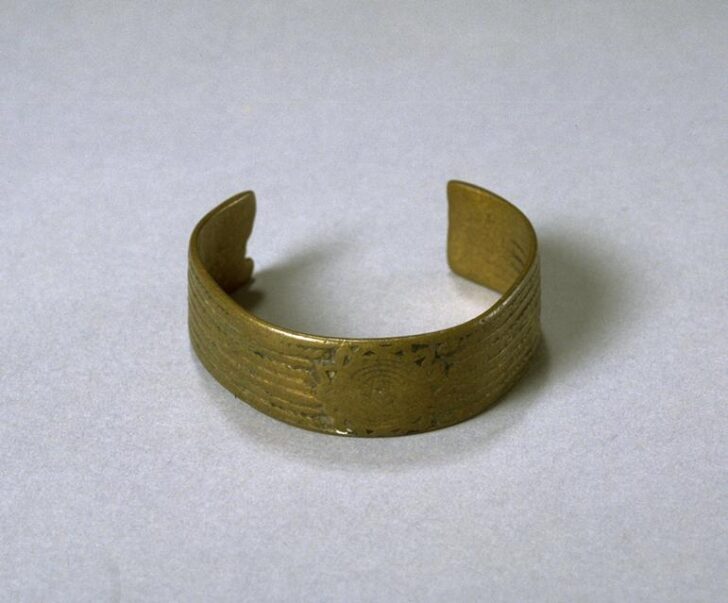Bracelet
Northern Cameroon; Northeastern Nigeria; Southern Chad

Description
Subject Matter:
This object is listed as made by Kirdi peoples; while most likely correct, it is not without issue. “Kirdi”, meaning pagan, was the label given to the various peoples from northern Cameroon, northeastern Nigeria, and southern Chad by neighboring Fulani and Kanuri peoples because they did not practice Islam, while the latter do. The people collectively known as “Kirdi” are actually many different cultural groups with their own customs. However, due to a lack of information on where exactly this object came from, it is not possible to say with certainty which group of people created it.
Along with belts decorated with brass beads or rings, Kirdi women also wore brass jewelry. From a young age, girls made jewelry from natural products such as raffia until they were older, at which time they began to wear metal jewelry, usually brass. It was often passed from mother to daughter and more jewelry acted as symbol of wealth and status.
References Cited:
Gebauer, Paul. 1979. Art of Cameroon. Portland, Or.: Portland Art Museum.
Lembezat, Bertrand. 1961. Les populations païennes du Nord-Cameroun et de l'Adamaoua. Paris: Presses Universitaires de France.
Lembezat, Bertrand. 1952. Mukulehe; un clan montagnard du Nord-Cameroun; coutumes, rites, croyances. Paris: Berger-Levrault.
Northern, Tamara. 1984. The Art of Cameroon. Washington, D.C.: Smithsonian Institution.
Page, Donna. 2007. A Cameroon World. New York: QCC Art Gallery Press.
Physical Description:
A brass bracelet with a design of central concentric circles edged by triangles. On each side are incised horizontal grooves. Much of the design on the bracelet has worn away.
Usage Rights:
If you are interested in using an image for a publication, please visit https://umma.umich.edu/request-image/ for more information and to fill out the online Image Rights and Reproductions Request Form.